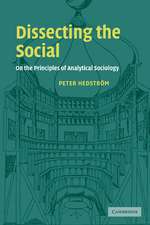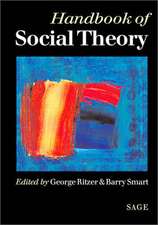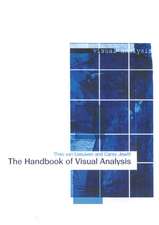Capitalism's New Clothes: Enterprise, Ethics and Enjoyment in Times of Crisis
Autor Colin Creminen Limba Engleză Paperback – 5 iul 2011
Using materialist, psychoanalytic and linguistic approaches, Cremin shows how capitalism, anxiety and desire enter into a mutually supporting relationship. He identifies three ways in which we are tied in to capitalism – through a social imperative for enterprise and competition; through enjoyment and consumption; and through the depoliticisation of ethical debate by government and business.
Capitalism's New Clothesis ideal for students of sociology and for anyone worried about the ethics of capitalism or embarrassed by the enjoyments the system has afforded them.
Preț: 269.94 lei
Nou
Puncte Express: 405
Preț estimativ în valută:
51.67€ • 53.24$ • 43.62£
51.67€ • 53.24$ • 43.62£
Carte tipărită la comandă
Livrare economică 03-17 martie
Preluare comenzi: 021 569.72.76
Specificații
ISBN-13: 9780745328140
ISBN-10: 0745328148
Pagini: 208
Dimensiuni: 135 x 215 x 13 mm
Greutate: 0.25 kg
Editura: PLUTO PRESS
Colecția Pluto Press
ISBN-10: 0745328148
Pagini: 208
Dimensiuni: 135 x 215 x 13 mm
Greutate: 0.25 kg
Editura: PLUTO PRESS
Colecția Pluto Press
Notă biografică
Colin
Creminis
author
of
Capitalism's
New
Clothes:
Enterprise,
Ethics
and
Enjoyment
in
Times
of
Crisis
(Pluto
Press,
2011)
and
iCommunism
(Zer0,
2012).
He
teaches
sociology
at
the
University
of
Auckland,
Aotearoa
/
New
Zealand.
Cuprins
Acknowledgements
1. Introduction
2. Naked Economy
The Stupid ID
The Postmodern Spirit
I mmaterial Capitalism
End-Capitalism
Conclusion
3. Naked Enterprise
Enterprise
Ethics
Enjoyment
Conclusion
4. Naked Ethics
Ethics
Enterprise
Enjoyment
Conclusion
5. Naked Enjoyment
Enjoyment
Enterprise
Ethics
Conclusion
6. Naked Ecology
You Can't Stop the Dancing Chicken
Carbon Zero
(M)Other Earth
The Elephant in the Room
Earth Second!
Conclusion
7. Conclusion
, ,
, ,
1. Introduction
2. Naked Economy
The Stupid ID
The Postmodern Spirit
I mmaterial Capitalism
End-Capitalism
Conclusion
3. Naked Enterprise
Enterprise
Ethics
Enjoyment
Conclusion
4. Naked Ethics
Ethics
Enterprise
Enjoyment
Conclusion
5. Naked Enjoyment
Enjoyment
Enterprise
Ethics
Conclusion
6. Naked Ecology
You Can't Stop the Dancing Chicken
Carbon Zero
(M)Other Earth
The Elephant in the Room
Earth Second!
Conclusion
7. Conclusion
, ,
, ,

















